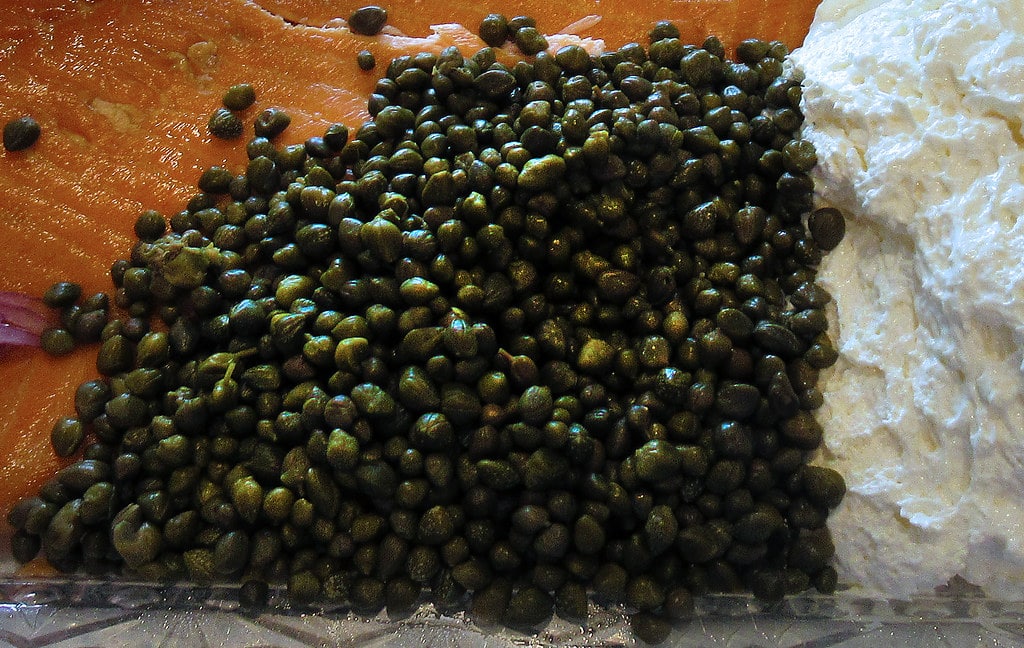
There’s no ignoring that capers yield a uniquely flavored vegetable relish, out there and free for the picking. If you’re brave and have made up your mind to ignore some good thorny stings.
Here’s what you do. To make the effort worth your while, try to locate two caper bushes growing in your vicinity. Well, one great big one will do. Ideally, you visit your crop every morning for a few days, harvesting each part separately, because leaves, stems, fruit and buds appear on the runners at different times, and each yields its own flavor. Not to mention that it’s a pain to separate pickled buds from leaves, stems, etc.
For pickling the shoots, cut them into finger-sized lengths and peel. As for the green, oval fruit, pick only the smaller ones. The mature one’s seeds are bitter and spoil the flavor.
Choose only tightly closed buds. Even a little opening in the husk will make a bud go mushy in the pickling. And surprise: even the leaves are pickle-able. Don’t bother picking individual leaves, just cut the tips off some shoots. You’ll have to scissor away any thorns at home.
Then, like olives, your crop must be soaked to get rid of bitterness. Rinse the dust off and throw out anything with worm holes. Soak for three days, changing the water daily. This not only leaches harsh flavors out, it encourages development of a flavorful fungus.
Pickle Capers Recipe
PrintIngredients
- 1/2 cup clean, fresh capers
- 1/2 cup vinegar
- 1/2 cup water
- 1 tbsp salt
Instructions
- Have ready 1/2 cup of soaked and drained caper buds, leaves or stems.
- Make a brine of 1/2 cup apple cider vinegar, 1/2 cup water and 1 tablespoon salt.
- Put your caper products in a glass jar and cover with the brine. Leave for 3 days, then taste. If you like it, start using.
- You may choose to continue pickling for one week. Either way, once you’re satisfied with the taste, store in the refrigerator.
Notes: If pickling the fruit, make enough brine, the same way as above, to cover the fruit generously. Proceed as above, but start tasting only after a week.
Don’t be alarmed if little white spots appear on your product. This is a natural reaction to the fermentation.
I haven’t salt-pickled capers myself, but am tempted to try it with leaves this summer. Here’s how: After soaking, pat dry between kitchen towels and pack in fine salt, generously covering the herb. Start tasting after a week. Rinse off the salt before eating.
So what do you do with your capers?
- Put them into salads. The Greeks occasionally put caper leaves and stems in mixed salads.
- Leaves and fruit taste good with fish and chicken, as a relish.
- Make tartar sauce with the buds.
- Or flavor your next tomato sauce with a few buds.
